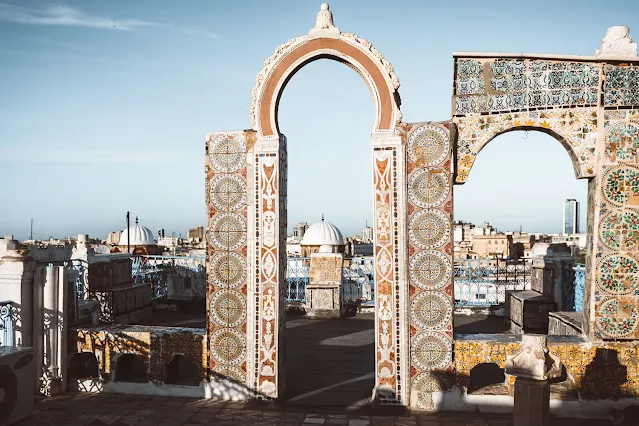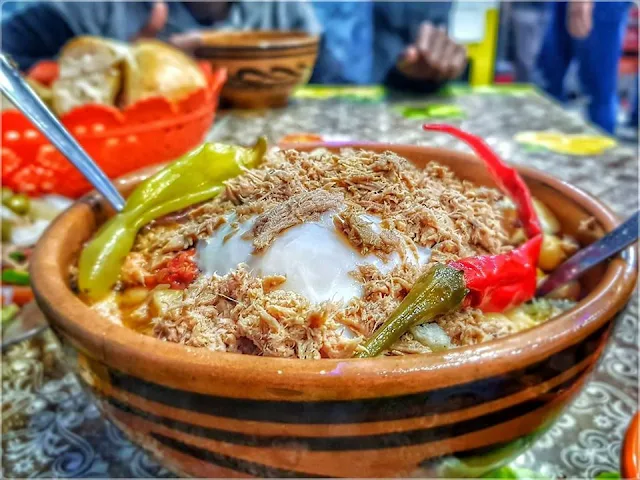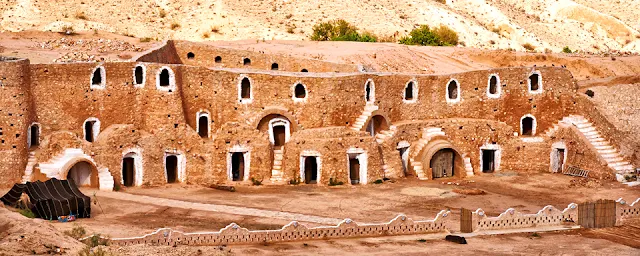Tunisia
Introduction
Tunisia, located on the northernmost tip of Africa, is a country where ancient history, vibrant culture, and stunning landscapes blend harmoniously. From the sprawling sands of the Sahara to the azure waters of the Mediterranean Sea, Tunisia offers an unforgettable experience for travelers seeking to explore its unique geography, historical heritage, and rich traditions. This article provides an in-depth look into Tunisia’s geography, history, culture, economy, and its most significant tourist attractions, offering a guide for those eager to discover this fascinating North African nation.
Geography and Climate
Tunisia covers approximately 164,000 square kilometers and boasts a diverse geography that includes Mediterranean coastlines, fertile plains, mountain ranges, and vast desert expanses. It is bordered by Algeria to the west, Libya to the southeast, and the Mediterranean Sea to the north and east. The northern region is known for its fertile lands, rolling hills, and olive groves, while the southern part of Tunisia is dominated by the Sahara Desert, where sand dunes stretch as far as the eye can see.
Tunisia enjoys a Mediterranean climate along its northern and eastern coastlines, characterized by hot, dry summers and mild, rainy winters. In the southern desert regions, however, the climate is arid, with extreme temperatures during the summer months. The coastal areas are lush and green, benefiting from sea breezes and consistent rainfall, making them ideal for agriculture. This geographical variety offers tourists a chance to experience everything from serene beach holidays to rugged desert adventures.
History
Tunisia's history is a rich tapestry that dates back thousands of years. The region was once the heart of ancient Carthage, a powerful Phoenician city-state that became a dominant force in the Mediterranean from the 9th century BCE. Carthage, located near modern-day Tunis, clashed with Rome in a series of wars known as the Punic Wars. The most famous of these wars featured the Carthaginian general Hannibal, who famously crossed the Alps with elephants to attack Rome. Despite these efforts, Carthage was eventually defeated by Rome, and Tunisia became part of the Roman Empire in 146 BCE.
Under Roman rule, Tunisia flourished as a province known for its grain production and thriving cities like Carthage, Dougga, and El Djem. These ancient Roman cities still exist today as archaeological sites, offering a glimpse into the grandeur of Tunisia’s past. After the fall of the Roman Empire, Tunisia saw successive invasions by the Vandals, Byzantines, and Arabs, with the latter bringing Islam and establishing the region as part of the Islamic Caliphate.
In the 16th century, Tunisia came under Ottoman rule and remained part of the Ottoman Empire until the French colonized the country in 1881. Tunisia gained independence from France in 1956, with Habib Bourguiba becoming its first president. Bourguiba modernized the country, focusing on education, women's rights, and healthcare. After his long rule, Zine El Abidine Ben Ali took over in 1987 until the 2011 revolution, which marked the beginning of the Arab Spring and led to the establishment of a democratic government.
Culture and Customs
Tunisia’s culture is a vibrant blend of Arab, Berber, and Mediterranean influences, reflecting its historical interactions with various civilizations. The official language is Arabic, but French is widely spoken due to Tunisia’s colonial history. Many Tunisians also speak English, particularly in tourist areas.
Cuisine:
Other traditional dishes include:
- Lablabi: A chickpea-based soup, often served with bread, eggs, and olive oil.
- Ojja: A spicy tomato and egg dish, often cooked with merguez sausage.
- Mechouia Salad: A grilled vegetable salad made with tomatoes, peppers, onions, and olive oil.
Social Structure and Customs
Tunisian society is known for its hospitality, and social gatherings are an important aspect of daily life. Family plays a central role, with extended families often living close to one another. Tunisians take pride in their country’s progressive stance on gender equality, with women enjoying extensive rights in areas like education, work, and political participation. The country’s secular laws and moderate social policies allow for a relatively liberal lifestyle compared to many other Arab nations.
Despite its progressive stance, Tunisia remains a society that respects traditions, particularly when it comes to important life events like weddings and religious celebrations. Tunisian weddings are elaborate affairs that can last several days, featuring traditional music, dance, and customs such as the henna ceremony.
Economy
Tunisia has a diverse economy, with sectors like agriculture, manufacturing, and tourism playing key roles. Agriculture, particularly the cultivation of olives, dates, and citrus fruits, is one of the country’s economic pillars. Tunisia is one of the world’s largest producers of olive oil, which is a major export product.
Major Tourist Attractions
- Carthage: A Glimpse into Ancient HistoryThe ancient ruins of Carthage, a UNESCO World Heritage site, are one of Tunisia’s most famous attractions. Once the capital of the powerful Carthaginian Empire, Carthage is located near the modern capital of Tunis. Visitors can explore the remains of Roman baths, amphitheaters, and ancient temples, all while enjoying breathtaking views of the Mediterranean.
- Medina of Tunis: A UNESCO Heritage SiteThe Medina of Tunis is a labyrinth of narrow streets, traditional souks (markets), and historic buildings. Declared a UNESCO World Heritage site, the Medina is home to stunning examples of Islamic architecture, including the Zitouna Mosque, one of the oldest mosques in Africa. The Medina’s lively souks offer visitors the chance to shop for traditional crafts, spices, and textiles.
- El Djem Amphitheater: Tunisia's Roman MarvelLocated in the small town of El Djem, this ancient Roman amphitheater is one of the largest in the world and is remarkably well-preserved. Built in the 3rd century CE, the amphitheater once hosted gladiator battles and could hold up to 35,000 spectators. Today, it stands as a testament to Tunisia’s Roman past and is another UNESCO World Heritage site.
- Sidi Bou Said: A Picturesque VillageThe charming village of Sidi Bou Said, perched on a cliff overlooking the Mediterranean Sea, is known for its whitewashed buildings with blue doors and windows. This picturesque town has long been an inspiration for artists and is a popular destination for those seeking a peaceful escape. The views from the village’s hilltop are simply spectacular.
- Sahara Desert: The Ultimate AdventureTunisia's portion of the Sahara Desert offers a variety of adventures for intrepid travelers, including camel treks, 4x4 expeditions, and visits to oases like Douz and Tozeur. The area is also famous for being a filming location for movies like Star Wars and The English Patient. Visitors can explore the vast dunes of the Grand Erg Oriental or relax in the serene palm-filled oases.
- Matmata: Troglodyte Homes and Star Wars Filming SitesMatmata is famous for its underground homes, which were traditionally inhabited by Berber communities. These troglodyte dwellings are carved out of the earth to provide natural insulation against the desert heat. Matmata also gained fame as a filming location for Star Wars, and fans of the franchise often visit the town to see the sites used in the films.
Conclusion
Tunisia is a country where history, culture, and nature come together to offer an unparalleled travel experience. From the ancient ruins of Carthage to the vast expanses of the Sahara, Tunisia’s unique blend of Mediterranean charm and Arab-Berber heritage makes it a captivating destination for any traveler. Whether you are seeking adventure, relaxation, or a journey through history, Tunisia has something for everyone.
References:
- Lonely Planet Tunisia (2023 Edition)
- UNESCO World Heritage Sites in Tunisia
- Tunisian Ministry of Tourism - www.tourisme.gov.tn
- National Geographic: Tunisia's Ancient Cities and Cultural Sites












No comments